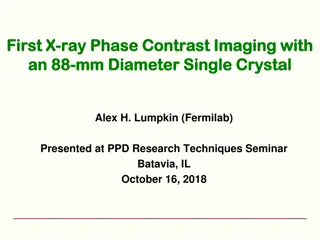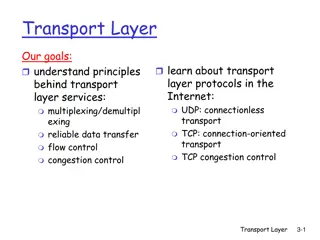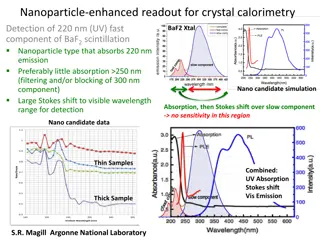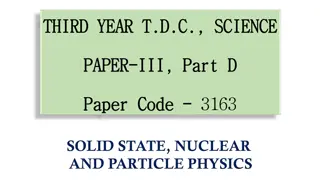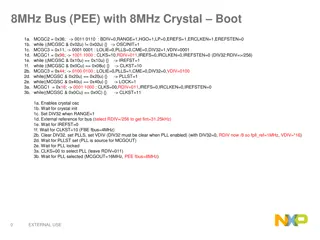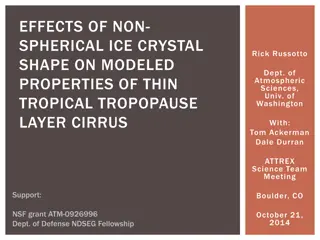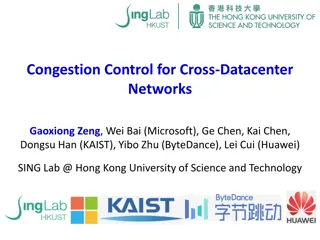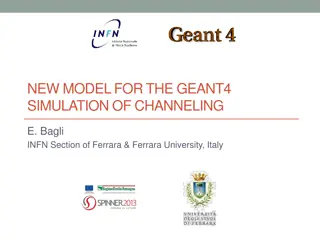
Exploring Long-Haul Transport Protocols for Wireless Sensor Networks
Discover the key features and characteristics of various long-haul transport protocols such as TCP, UDP, DCCP, SCTP, and MPTCP. Understand how each protocol handles transmission failure, congestion control, and reliability to support wireless sensor networks effectively.
Download Presentation

Please find below an Image/Link to download the presentation.
The content on the website is provided AS IS for your information and personal use only. It may not be sold, licensed, or shared on other websites without obtaining consent from the author. If you encounter any issues during the download, it is possible that the publisher has removed the file from their server.
You are allowed to download the files provided on this website for personal or commercial use, subject to the condition that they are used lawfully. All files are the property of their respective owners.
The content on the website is provided AS IS for your information and personal use only. It may not be sold, licensed, or shared on other websites without obtaining consent from the author.
E N D
Presentation Transcript
Long-haul Transport Protocols Presenter: Crystal 1
Motivation A survey of long-haul transport protocols for wireless sensor networks gateways 2
Transport Protocols TCP (Transmission Control Protocol) UDP (User Datagram Protocol) DCCP (Datagram Congestion Control Protocol) SCTP (Stream Control Transmission Protocol) MPTCP (Multipath TCP) 3
TCP (Transmission Control Protocol) TCP guarantees that each segment will be sent to its destination, even with occasional occurrence of segment loss and unordered delivery. Features: 1. Retransmission mechanism for transmission failure 2. Network congestion control mechanism 4
UDP (User Datagram Protocol) UDP provides application multiplexing (via port numbers) and integrity verification (via checksum), but it does not handle any transmission failure. Features: 1. No assurance mechanism 5
DCCP (Datagram Congestion Control Protocol) DCCP is a successor of UDP. Features: 1. Unreliable flows of datagrams 2. Network congestion control mechanism 3. Acknowledgement mechanism Congestion Control Identifiers (CCIDs) : congestion control algorithms 1. CCID 2 : TCP-like algorithm 2. CCID 3 : TCP-Friendly Rate Control (TFRC) 3. CCID 4 : TCP-Friendly Rate Control for Small Packets (TFRC-SP) 6
SCTP (Stream Control Transmission Protocol) SCTP is message-oriented (similar to UDP), while it also supports reliable, in-sequence transport of messages with congestion control (similar to TCP). Features: 1. Multi-streaming 2. Multi-homing 3. Cookie mechanism for association authentication 4. Selective ACK 7
MPTCP (Multipath TCP) Without modifying regular TCP operating, it can establish multiple TCP paths between a sender and a receiver. Features: 1. Multi-streaming 2. TCP Option field for connection setup and adding subflows 3. Data sequence mapping for in-order delivery 8
MPTCP Establish Connection An MPTCP connection is established by using the three-way handshake with TCP options to negotiate its usage. A MP_CAPABLE : supports MPTCP Key : for security purposes B 9
MPTCP Add Subflows (cont.) MP_JOIN token : for existing MPTCP connection authentication MP_JOIN Token, rand-A MP_JOIN rand-B, HMAC-B rand (key) : for security purposes HMAC (hash-based message authentication code) : for security purposes A B MP_JOIN HMAC-A 11
MPTCP Transmit Data Data transmitted over one subflow can be retransmitted on another to recover from losses. 12
MPTCP Transmit Data (cont.) After the connection is set up, absolute data sequence number will be added into the TCP Option for reassembly. However, the middleboxes, such as firewalls , NATs, and load balancers, would modify the TCP header or the payload of passing TCP segments. Data sequence mapping: 1. relative subflow sequence number 2. data-level length 13
Performance Experiment Environment : Raspberry Pi (Model B+, Raspbian Jessie) Measuring Tool : netperfmeter (network performance meter) UDP achieves the highest throughput 39.3 Mbit/s. DCCP gets the lowest throughput 13.2 Mbit/s. 15
Conclusion UDP and DCCP are suitable for applications with timing constraints, such as Voice over IP (VoIP). TCP, SCTP and MPTCP should be used for accurate delivery. Considering the performance of transmitting single type of data, TCP is a better choice than SCTP. In view of multiple data delivery, SCTP and MPTCP are the choices for better performance. 16







